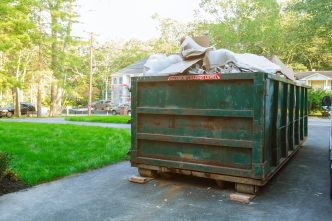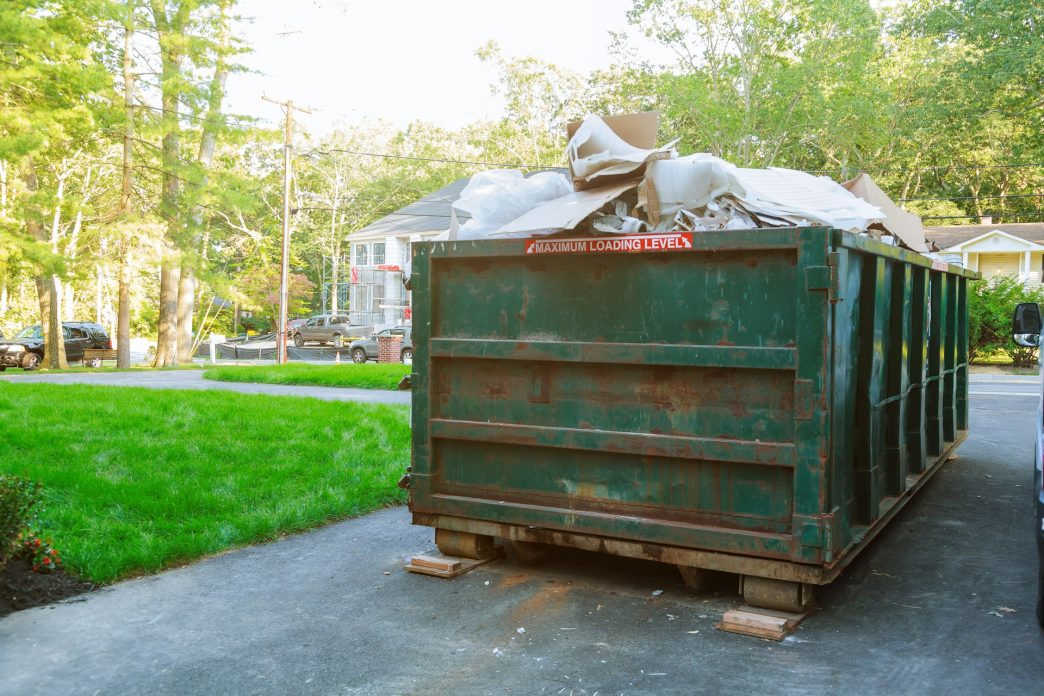Construction projects, whether residential or commercial, generate a significant amount of debris and waste materials. Proper disposal of this construction debris is crucial not only for maintaining a safe and organized work environment but also for complying with local regulations. One of the most effective solutions for managing this waste is the use of construction debris dumpsters. In this article, we’ll explore the importance of these dumpsters, their benefits, how to choose the right one for your project, and best practices for efficient site cleanup.
The Importance of Construction Debris Dumpsters
Construction sites can quickly become cluttered with materials such as concrete, wood scraps, metal pieces, packaging, and other waste. Without a designated place to dispose of these items, the site can become hazardous for workers and visitors. Construction debris dumpsters provide a centralized location for waste, helping to:
- Enhance Safety: Reducing clutter minimizes the risk of accidents and injuries caused by tripping over debris or being struck by loose materials.
- Improve Efficiency: A clean worksite allows workers to move freely and focus on their tasks without obstructions.
- Ensure Compliance: Proper waste disposal is often mandated by local laws and regulations. Using dumpsters helps meet these requirements and avoid potential fines.
- Promote Environmental Responsibility: Proper segregation and disposal of waste materials support recycling efforts and reduce the environmental impact.
Benefits of Using Construction Debris Dumpsters
Incorporating dumpsters into your construction project offers several advantages:
- Convenience: Dumpsters provide an on-site solution for waste disposal, eliminating the need to transport debris to off-site facilities frequently.
- Cost Savings: Renting a dumpster can be more economical than alternative waste management methods, especially when considering the labor and time saved.
- Variety of Sizes: Dumpsters come in various sizes to accommodate projects of all scales, from small renovations to large construction sites.
- Flexibility: Rental companies often offer flexible rental periods and pickup schedules to align with your project’s timeline.
- Proper Waste Segregation: Some dumpsters are designated for specific types of waste, aiding in recycling efforts and ensuring hazardous materials are handled correctly.
Choosing the Right Dumpster for Your Project
Selecting the appropriate construction debris dumpster involves considering several factors:
1. Assess Your Waste Type and Volume
Identify the types of materials you’ll be disposing of—such as concrete, asphalt, wood, metal, or mixed debris—and estimate the volume of waste your project will generate. This assessment helps determine the size and type of dumpster you need.
2. Dumpster Sizes
Common dumpster sizes for construction debris include:
- 10-Yard Dumpsters: Suitable for small projects like minor renovations or garage cleanouts.
- 20-Yard Dumpsters: Ideal for medium-sized projects, such as kitchen remodels or roofing jobs.
- 30-Yard Dumpsters: Best for large projects like new home construction or significant additions.
- 40-Yard Dumpsters: Used for major construction sites, commercial projects, or extensive renovations.
Choosing the correct size prevents overfilling and avoids the need for multiple pickups, saving time and money.
3. Consider Weight Limits
Different materials have varying weights. Heavy materials like concrete or soil may require special dumpsters with higher weight capacities. Be aware of the rental company’s weight limits to avoid extra fees.
4. Rental Duration and Scheduling
Determine how long you’ll need the dumpster. Some companies offer flexible rental periods, while others may have strict timelines. Schedule delivery and pickup to align with your project’s phases.
5. Regulations and Permits
Check local regulations regarding dumpster placement. You may need a permit if the dumpster will be placed on public property or streets. A reputable rental company can assist with obtaining necessary permits.
Best Practices for Efficient Site Cleanup
Maximize the benefits of your construction debris dumpster by following these best practices:
1. Plan Ahead
Incorporate waste management into your project planning. Allocate space for the dumpster that’s easily accessible but doesn’t impede workflow.
2. Educate Your Team
Ensure all workers understand what materials can be placed in the dumpster and encourage consistent use to maintain site cleanliness.
3. Separate Materials When Possible
If your project involves recyclable materials, consider using multiple dumpsters for different types of waste. This separation facilitates recycling and may reduce disposal costs.
4. Monitor Dumpster Fill Levels
Keep an eye on how quickly the dumpster fills up. Schedule pickups or additional dumpsters in advance to prevent delays.
5. Comply with Prohibited Items
Avoid placing prohibited items in the dumpster, such as hazardous materials, chemicals, or certain electronics. Improper disposal can lead to legal issues and environmental harm.
Conclusion
Construction debris dumpsters are an essential component of efficient and responsible construction site management. They enhance safety, improve productivity, and ensure compliance with regulations. By selecting the right dumpster and implementing best practices, you can streamline your waste disposal process, reduce costs, and contribute to environmental sustainability.
Investing in a construction debris dumpster is not just about removing waste—it’s about building a foundation for a successful project. With proper planning and the right partner, you can keep your site clean, safe, and efficient from start to finish.












